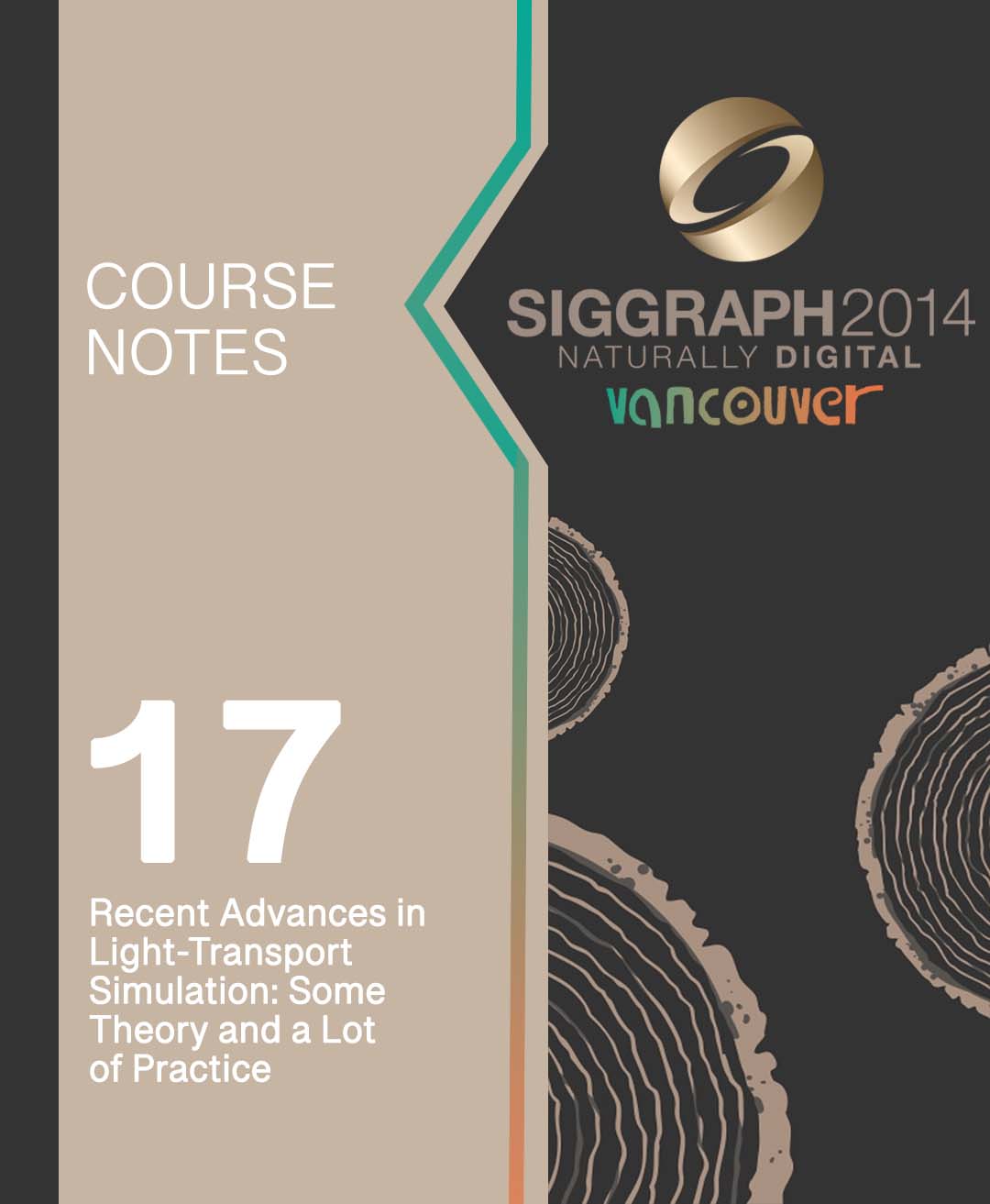“Recent Advances in Light-Transport Simulation: Some Theory and a Lot of Practice” by Křivánek, Keller, Georgiev, Kaplanyan, Fajardo, et al. …
Conference:
Type(s):
Title:
- Recent Advances in Light-Transport Simulation: Some Theory and a Lot of Practice
Organizer(s):
Presenter(s)/Author(s):
- Jaroslav Křivánek
- Alexander Keller
- Iliyan Georgiev
- Anton S. Kaplanyan
- Marcos Fajardo
- Mark Meyer
- Jean-Daniel Nahmias
- Ondřej Karlík
- Juan Canada
Entry Number: 17
Abstract:
Prerequisites
Familiarity with rendering and with basic concepts of global illumination computation is expected.
Who Should Attend
Industry professionals and researchers interested in recent advances in robust light transport simulation for realistic rendering with global illumination.
Abstract
We are witnessing a renewed research interest in robust and efficient light transport simulation based on statistical methods. This research effort is propelled by the desire to accurately render general environments with complex materials and light sources, which is often difficult with the industry-standard ad hoc solutions. In addition, it has been recognized that advanced methods, which are able to render many effects in one pass without excessive tweaking, increase artists productivity and allow them to focus on their creative work. For this reason, the movie industry is shifting away from approximate rendering solutions towards physically-based rendering methods, which poses new challenges in terms of strict requirements on high image quality and algorithm robustness.
Many of the recent advances in light transport simulation, such as new Markov chain Monte Carlo methods, the robust combination of bidirectional path tracing with photon mapping, or path space filtering are made possible by interpreting light transport as an integral in the space of light paths. However, there is a great deal of confusion among practitioners and researchers alike regarding these path space methods.
The main contribution of the theoretical part of the course is a coherent review of the path integral formulation of light transport and its applications, including the most recent ones. We show that rendering algorithms that may seem complex at first sight, are in fact naturally derived from this general framework. We also show that the path integral framework makes the extension of the surface-based algorithm to volumetric media extremely simple. The course includes an extensive empirical comparison of the various light transport algorithms. A substantial part of the course is then devoted to the application of advanced light transport simulation and path sampling methods in practical rendering tasks in architectural visualization and VFX.





